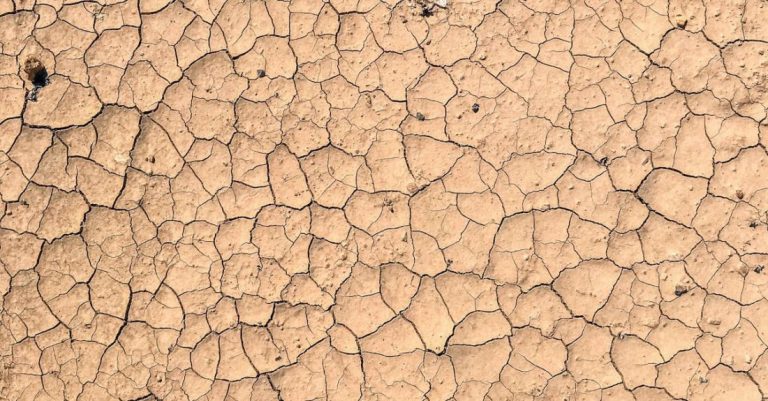
Soil erosion is a common issue that many gardeners face, leading to the loss of fertile topsoil and potential damage to plants. Preventing soil erosion in your garden is crucial for maintaining a healthy and thriving outdoor space. By implementing a few key practices, you can protect your soil and promote a more sustainable environment for your plants to grow. Here are some effective strategies to help you prevent soil erosion in your garden.
Understand Your Soil Type
Before taking any preventive measures, it is essential to understand the type of soil in your garden. Different soil types have varying levels of susceptibility to erosion. Sandy soil, for example, is more prone to erosion due to its loose texture, while clay soil has better water retention but can still be affected by erosion. By knowing your soil type, you can tailor your erosion prevention techniques to suit its specific characteristics.
Mulch to Protect the Soil
One of the simplest yet most effective ways to prevent soil erosion in your garden is by using mulch. Mulching creates a protective barrier that shields the soil from the impact of raindrops, reducing the risk of erosion. Organic mulches such as wood chips, straw, or leaves not only help prevent erosion but also enrich the soil as they decompose. Spread a thick layer of mulch around your plants to lock in moisture, suppress weeds, and safeguard the soil from erosion.
Plant Groundcover
Groundcover plants are low-growing vegetation that spreads across the soil surface, forming a protective layer that prevents erosion. By planting groundcover plants such as clover, creeping thyme, or sedum, you can help stabilize the soil and reduce the risk of erosion. These plants have extensive root systems that bind the soil together, making them excellent natural erosion control agents. Choose groundcovers that are well-suited to your garden’s growing conditions to maximize their erosion-preventing benefits.
Create Contour Beds
Contour beds are raised beds that follow the natural slope of the land, creating a series of terraces that help slow down water runoff and prevent soil erosion. By building contour beds in your garden, you can effectively capture rainwater and allow it to infiltrate into the soil rather than washing away valuable topsoil. Contour beds also provide a visually appealing way to organize your garden while serving a practical purpose in preventing erosion.
Install Retaining Walls
In areas of your garden where erosion is particularly problematic, installing retaining walls can be a valuable solution. Retaining walls help hold back soil on steep slopes, preventing it from being washed away during heavy rainfall. These structures can be made from various materials such as wood, stone, or concrete, depending on your garden’s aesthetic and functional requirements. Retaining walls not only prevent erosion but also add structural interest to your outdoor space.
Implement Rain Gardens
Rain gardens are designed to capture and absorb rainwater, reducing the amount of runoff that can cause soil erosion. By strategically placing rain gardens in low-lying areas of your garden, you can create a natural water filtration system that helps prevent erosion while promoting plant growth. Choose native plants for your rain garden that are well-adapted to local climate conditions and can thrive in moist environments. Rain gardens are not only effective erosion control measures but also contribute to biodiversity and ecosystem health.
Maintain Vegetative Cover
Maintaining a healthy vegetative cover in your garden is essential for preventing soil erosion. Plants play a crucial role in stabilizing the soil with their root systems, reducing the impact of rainfall and wind erosion. Regularly mow your lawn, trim hedges, and prune shrubs to encourage dense vegetation that covers the soil surface. Avoid leaving bare patches of soil exposed, as they are more vulnerable to erosion. By promoting vegetative cover in your garden, you can create a natural defense against soil erosion while enhancing the overall beauty of your outdoor space.
Promote Sustainable Gardening Practices
Incorporating sustainable gardening practices into your routine can help prevent soil erosion and promote long-term soil health. Avoid over-tilling the soil, as it can disrupt its structure and make it more susceptible to erosion. Practice crop rotation to maintain soil fertility and prevent nutrient depletion, which can weaken the soil’s ability to resist erosion. Use organic fertilizers and avoid chemical pesticides that can harm beneficial soil organisms and compromise soil health. By adopting sustainable gardening practices, you can create a resilient garden ecosystem that is less prone to erosion and more environmentally friendly.
Conclusion:
Protect Your Garden Soil for a Sustainable Future
Preventing soil erosion in your garden is essential for preserving the health and productivity of your outdoor space. By understanding your soil type, using mulch, planting groundcover, creating contour beds, installing retaining walls, implementing rain gardens, maintaining vegetative cover, and promoting sustainable gardening practices, you can effectively safeguard your soil from erosion and create a more sustainable environment for your plants to thrive. Take proactive steps to protect your garden soil, and enjoy a beautiful and resilient outdoor space for years to come.





